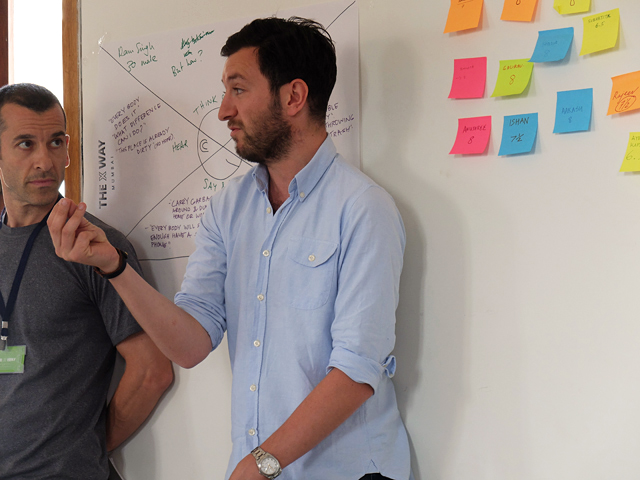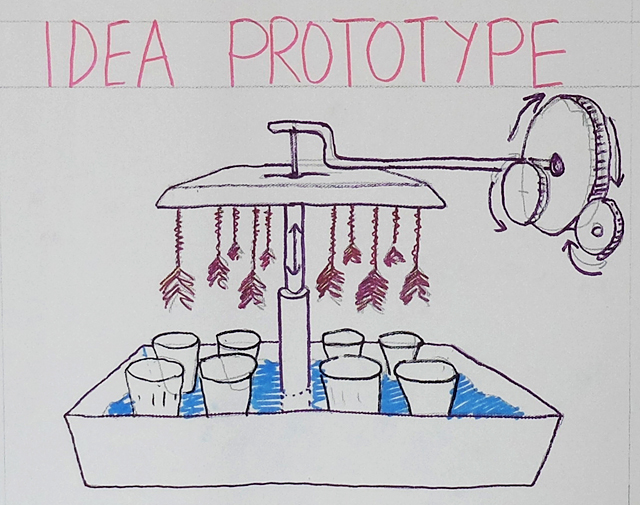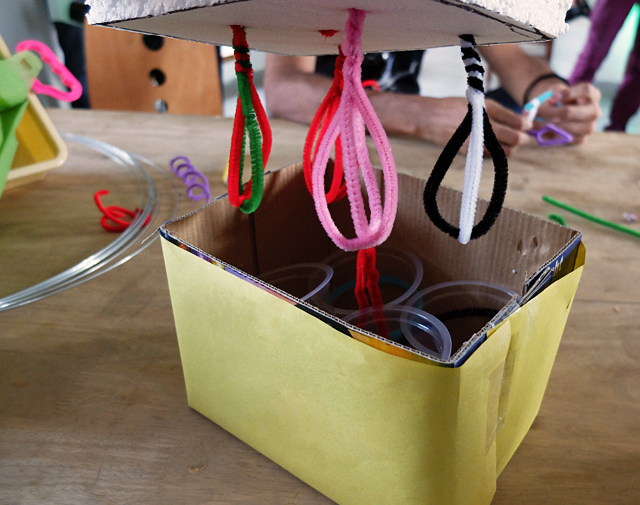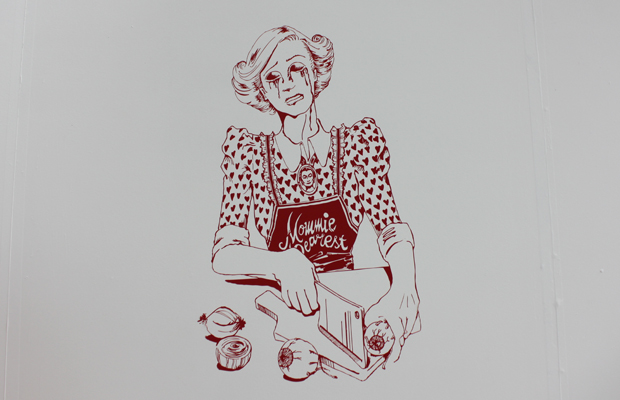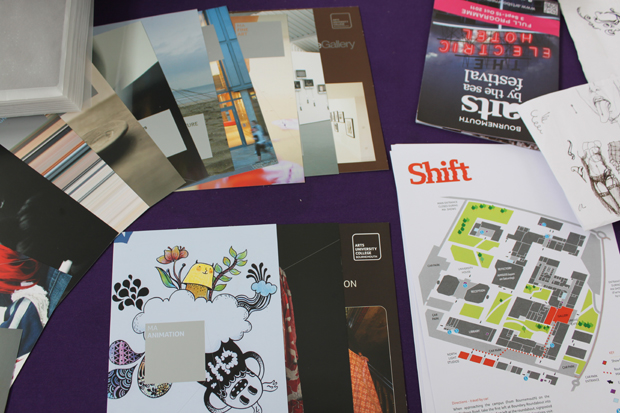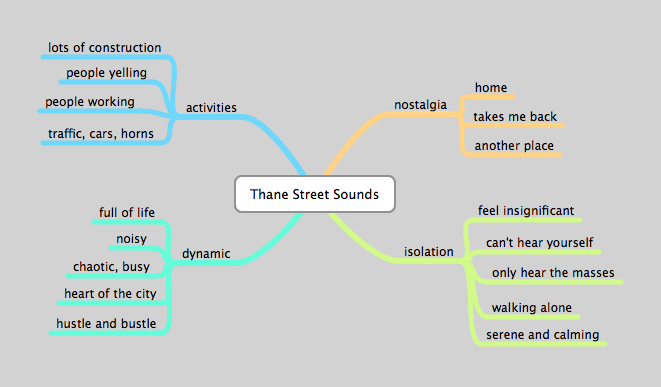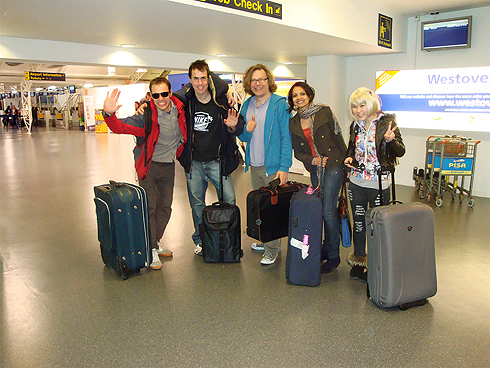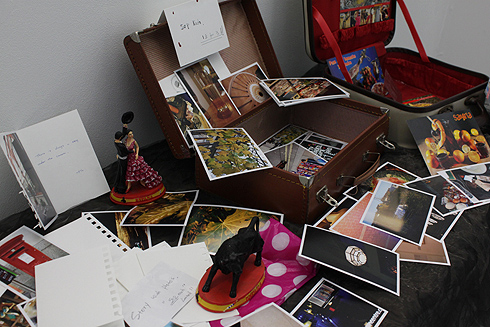Creating the Jugaad Dishwasher, The X-Way
The X-Way was a 2 day workshop sponsored by Nokia and Microsoft that focused on ideas, strategies and discussion around improving Mumbai city. Ben & Andrew moderated the workshop, keeping it challenging as twenty creatives and innovators came together with many, many city ideas.
The X-Way was a 2 day workshop sponsored by Nokia and Microsoft that focused on ideas, strategies and discussion around improving Mumbai city. Ben & Andrew moderated the workshop, keeping it challenging as twenty creatives and innovators came together with many, many city ideas.
One of the interesting exercises was listing things we love and hate about Mumbai. It was heartening to see that the 'love' pile was so much bigger despite Mumbai's numerous faults.
When discussing Mumbai's numerous problems, traffic cannot be ignored. Everything to do with traffic and way-finding is contextual. Signage is missing in a lot of places. When pedestrians give directions, the meaning may be different depending on the tone of their voice, how they stand, hand gestures and language. Honking has varied meanings depending on frequency, tones, loudness and the length of each honk. The city is a hotbed of large scale issues and topics of interest.
My team eventually looked at pavement ownership as a microcosm of health and sanitation. How could we encourage and create value in a public space such as pavement. We were in posh areas of Mumbai, and even here we found street hawkers taking ownership of pavements (in a good way) keeping them clean and ensuring their part of the pavement was maintained. Eventually we focussed even further and came up to a sugarcane vendor. Could we come up with something to help him wash the glasses in his stall while he was busy doing a million other things like making the juice, serving and cashing. A lot of times hygiene and proper washing was way down in his priorities while multi-tasking.
The final concept after two days of guerrilla research and quick prototyping was the 'jugaad dishwasher' - a mechanically automated machine that washed glasses saving the vendor time and effort as he ran a one-man operation. The washer connects to the juice machine itself so it doesn't need electricity to run. Soap is optional here since most vendors do not use soap. Overall the 'jugaad dishwasher' concept could also work for other street hawkers, juice vendors and with a few upgrades could even save time in someone's kitchen.
Check out some photos of the prototype we made. The video below has a few shots of us talking to sugarcane vendors.
The rotating juicer translates into the up and down movement of the simple washer, which repeatedly rinses the glasses. The trough can be easily refilled and cleaned and occupies minimal space.
Neon Workshop
The neon workshop was a one-day crash course on making neon lights. Detailed demonstrations on how to bend glass tubes, suck out all the air and then fill the tube with either neon, argon or helium took up the first half of the day. The second half was spent exploring the material, after which we were given free reign on the propane blowtorches!! :)
Cutting a glass tube
Glass tubes are bent after careful heating in the right angles, using gravity. Results like this only come after lots of practice.
The ribbon burner has a long flame that softens a large part of the tube evenly.
Joining two glass tubes using a precise burner was extremely difficult. I totally failed at my attempt, I ended up blowing a glass bubble instead because of too much air, and then the bubble burst. A tube with a hole can never be used for neon.
Part of the giant machine that creates a vaccum in the tubes before filling it with the required gases.
Neon master Julia Bickerstaff and British artist Richard Wheater encouraged us to question the limits of the material and explore its potential in relation to our individual art practice. That was the best part, being introduced to a completely new medium and told to freak out with it on the same day. Also worth mentioning was how to transcribe an idea into a drawing for neon-making.
The video below is my work (made by Julia of course) which we filled with helium. I love the colour of helium, its a natural pink hue that went well with the concept, which is the number sixty-nine in Devanagari letterforms. Due to a few impurities added in the tube flickers continuously, an effect that I really really wanted to try out. Another way to do this would be to programme it to flicker. However this is purely physical and does not need any external controls.
The best work was displayed later at the Light Night festival in Bournemouth town center and the Neon: Shaping Light exhibition at the text+work gallery.
Shift Exhibition
Have a look at our post-graduate show Shift. This friday (9th September) is the last day so don't miss it if you're in or around Bournemouth :)
Artist Yi Lu with her paper mache world
Subconscious Form by Shiro Araki
Urban Brick by Bana Toutounjee
by Taro Morimoto
Mumbai/Bombay by Aditi Kulkarni
New Blindness by Rocco Nahas
A stretchable movie by Richard Hurst.
Be-Bee Project by Kaya J. Lee
The Ophelia Project by Samantha Else.
Out of Sight
With an unused underground car park as its gallery walls, Out of Sight investigates the resilience and flexibility of art, and the need for its development with supporting communities in unorthodox circumstances: an appreciation for the otherwise overlooked in the chosen location compliments the political provocation of the role of the outsider in society and rebellion against industry precepts.
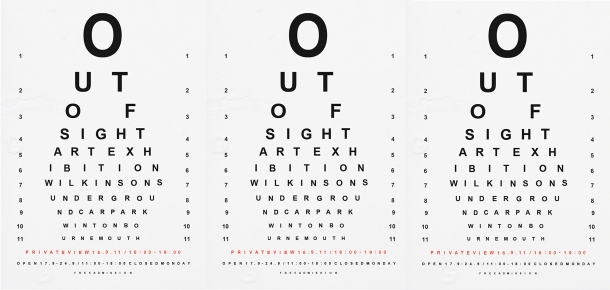 The exhibition Out of Sight is from 17th to 24th of September from 11am to 6pm and will showcase a wide variety of artwork from multimedia installations to sculpture and drawing.
The exhibition Out of Sight is from 17th to 24th of September from 11am to 6pm and will showcase a wide variety of artwork from multimedia installations to sculpture and drawing.
With an unused underground car park as its gallery walls, Out of Sight investigates the resilience and flexibility of art, and the need for its development with supporting communities in unorthodox circumstances: an appreciation for the otherwise overlooked in the chosen location compliments the political provocation of the role of the outsider in society and rebellion against industry precepts.
Below is a video by Michael Compton of day two of the massive clean-up of the dark, unused space.
Mumbai Noise
I spoke to several people who had never visited India, and collected their reactions to recorded street sounds from Thane. I asked them how the sound made them feel and what it reminded them of.
Noise is 'part of the experience of the urban' (Barry, 2000, p.170). I am interested in how it can be used to transport people to an other place, to create a visual experience with sound alone. In his essay on Noise the author Andrew Barry (2000, p.168) says:
For Russolo, far from seeking to block out this noise, modern composers should listen to it and learn from it. In doing so they should not attempt to produce pure sounds, which were, in his view, 'estranged from life'.
The author states that though during futurist Luigi Russolo's time the modern city was a noisy place, today 'it is increasingly blocked out, dampened down or simply displaced' (Barry, 2000, p.170). It is easy to disagree since in a developing city such as Mumbai we suffer from dangerously high noise levels, a problem that is getting increasingly difficult to contain.
Russolo's futurist manifesto The Art of Noise inspired me to study the topic further. It is fascinating to read his account from 1913, where he literally predicts the rise in popularity of electronica, techno, trance and industrial rock (Russolo, 1967, p.5):
Nowadays musical art aims at the shrilliest, strangest and most dissonant amalgams of sound. Thus we are approaching noise-sound. This revolution of music is paralleled by the increasing proliferation of machinery sharing in human labor. In the pounding atmosphere of great cities as well as in the formerly silent countryside, machines create today such a large number of varied noises that pure sound, with its littleness and its monotony, now fails to arouse any emotion.
[Image Source] ^Russolo's mechanical orchestra.
This lead me to compare the unedited urban Mumbai sounds with Russolo's work with the mechanical orchestra, a relevant example is Risveglio Di Una Città 1913:
It has opened a whole new world in terms of how I can edit raw street sound and the various ways I can integrate it within a space. Using similar fantastical "noise-music" from Mumbai I can create an atmosphere and place that is inherent to the city.
Reference
Ananthakrishnan, G. (2010). Mumbai Diwali Decibel Levels: Cold Comfort. Nov.6th 2010. Digital Journo. [online]. Available from: http://digitaljourno.wordpress.com/2010/11/06/mumbai-diwali-decibel-levels-cold-comfort/ Accessed 14th May 2011.
Barry, A (2000). Noise. In: Pile, S. and Thrift, N. (eds.) City A-Z. London: Routledge.
Naik, Y. and Khera, D. (2011). IIT-B Demands Noise Barriers. Mumbai Mirror. [online]. April 17th 2011. Available from: http://www.mumbaimirror.com/article/2/2011041720110417030951301232b713d/IITB-demands-noise-barriers.html [Accessed: 13th May 2011].
Russolo, L. (1967). The Art of Noise, futurist manifesto 1913. [pdf]. Something Else Press. Available from: http://www.ubu.com/historical/russolo/index.html [Accessed 13th May 2011].
Rebello, S and Lohade. U. (2011). Sound and fury in Mumbai. Hindustan Times Mumbai. [online] April 20, 2011. Available from: http://www.hindustantimes.com/StoryPage/Print/687364.aspx [Accessed 12th May 2011].
Wikipedia (2011). The Art of Noises. Available from: http://en.wikipedia.org/wiki/The_Art_of_Noises [Accessed 13th May 2011].
More on Mumbai Lights

 ^Texture: Projecting on the floor carpet.
^Texture: Projecting on the floor carpet.
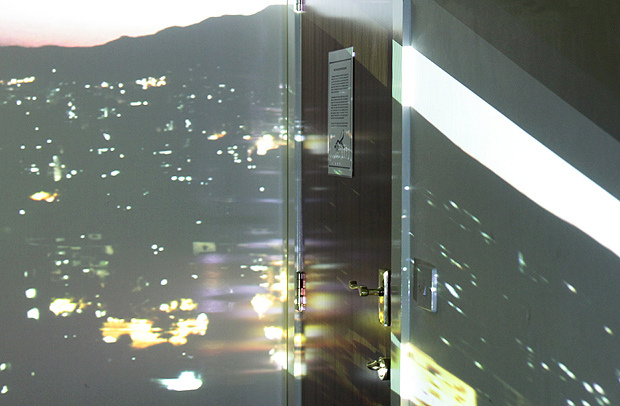 ^Distorted night video on the same door.
^Distorted night video on the same door.
 ^Texture: Regular projector produces visible lines and pixels that cover the wall.
^Texture: Regular projector produces visible lines and pixels that cover the wall.
This is a series of experiments on how Mumbai city lights and sound interact with familiar spaces around me. Earlier I used overlapping projections and shadows to express a conflicting bipolarity within Mumbai. As I attempt to integrate relevant space and sound into the experience, location is one of the most important factors that come into play. One option is to use the projections and video in a suitable outdoor space, and the other is to use a place personal and familiar to me, referencing my memories of the city and my identity as a Mumbaikar. Here I've experiments on the walls, ceiling and floor carpet, observing the effects of the night videos and day videos on various coloured surfaces and corners. The results encouraged me to try more spontaneous variations, rather than make just one well-planned installation.
Spain
This was a four day group project focussed on creating work based on our course inputs on artifice, site and place. During our presentation we spoke about our week long "trip" to spain, showing photographs, postcards and souvenirs from our travels. We also recounted interesting anecdotes about the journey. In the evening we organized an event around the "Spain" trip, exhibiting prints of our tourist photographs, postcards and a video of our journey to the airport. We also sold "Spanish" food, beer and candy to recover the cost of printing and attract a wider audience.
 At the Loarre Castle, in Huesca, Spain
At the Loarre Castle, in Huesca, Spain
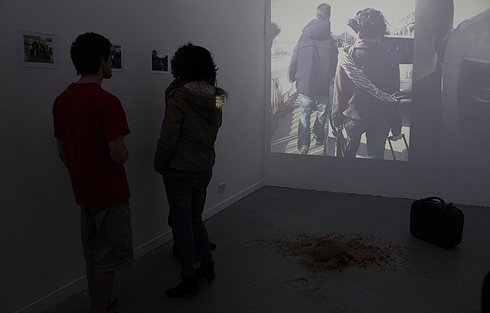 Video collage of airport trip.
Video collage of airport trip.
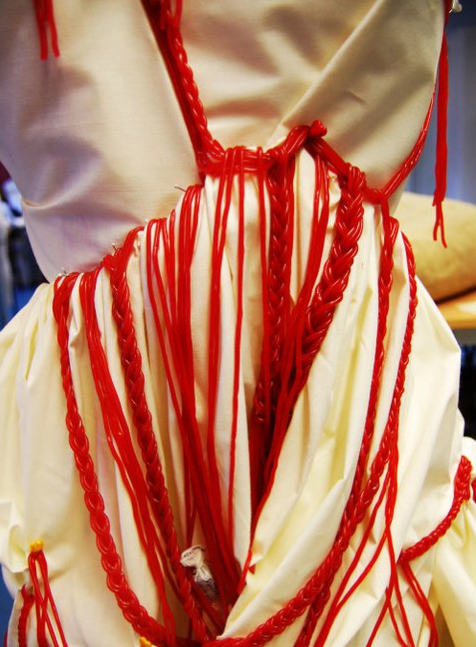 Detail of costume made from Spanish candy by Mimi He.
Photo collage by Rodrigo Munoz and Aditi Kulkarni. Photos and videos by Taro Marimoto and Mimi He.
Detail of costume made from Spanish candy by Mimi He.
Photo collage by Rodrigo Munoz and Aditi Kulkarni. Photos and videos by Taro Marimoto and Mimi He.
Reactions to the work were varied. Some commented that the spanish trip was obviously fake and therefore made the audience feel like they were listening to a lie, also making them uncomfortable. Most of the audience laughed throughout the presentation, which was our main aim, to entertain and tell a good story. Others enjoyed the "tongue-in-cheek" retelling of our experience. Overall we created an artifical journey by producing digital collages of real pictures taken by one of our group members in Spain, and pictures of us digitally added into these "real" locations. We also aimed to comment on the tourist experience by bringing in cliche souvenirs such as the spanish bull. Overall, the audience felt that video was the most believable evidence of such a trip.
Projecting on Textures
Stumbling on the photograph below inspired me to explore projections on outdoor urban surfaces such as cement. The massive pillars give shape and personality to the projected paintings, changing their meaning.

"An extraordinary exhibition held in former bauxite mines in Provence. The hollow caves and pillars are used to project images, constantly changing and overlapping each other." Photo and description by dorsetlass @ flickr.


